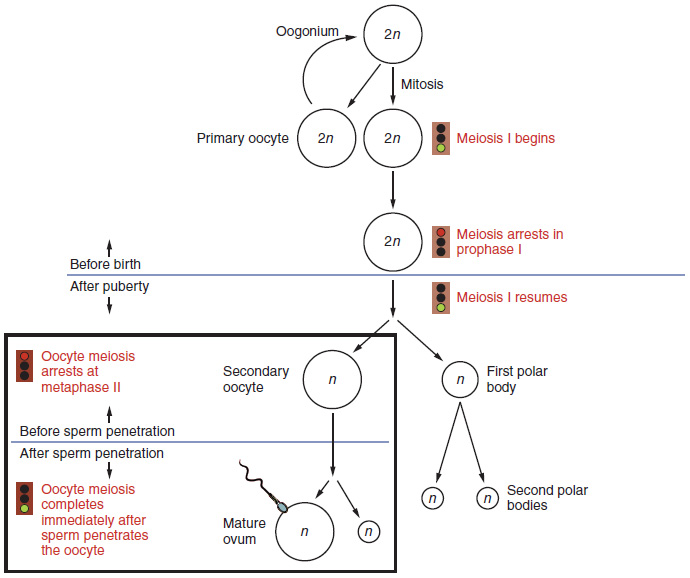lab 13 – Physiology of the Reproductive System
Activity 1 – Spermatogenesis
Spermatogenesis, the production of sperm, is an ongoing process during a normal male’s lifetime. It takes place in the seminiferous tubules in men’s testes and begins at puberty. One cycle, from spermatogonia (sperm stem cells) to spermatozoa (mature sperm) takes about 64 days. Sperm can survive in the uterine tube for five to seven days, while sperm stored in the epididymis can survive for 74 days, after which if they are not released will die and be reabsorbed by the body. Use the figure below to examine spermatogenesis.
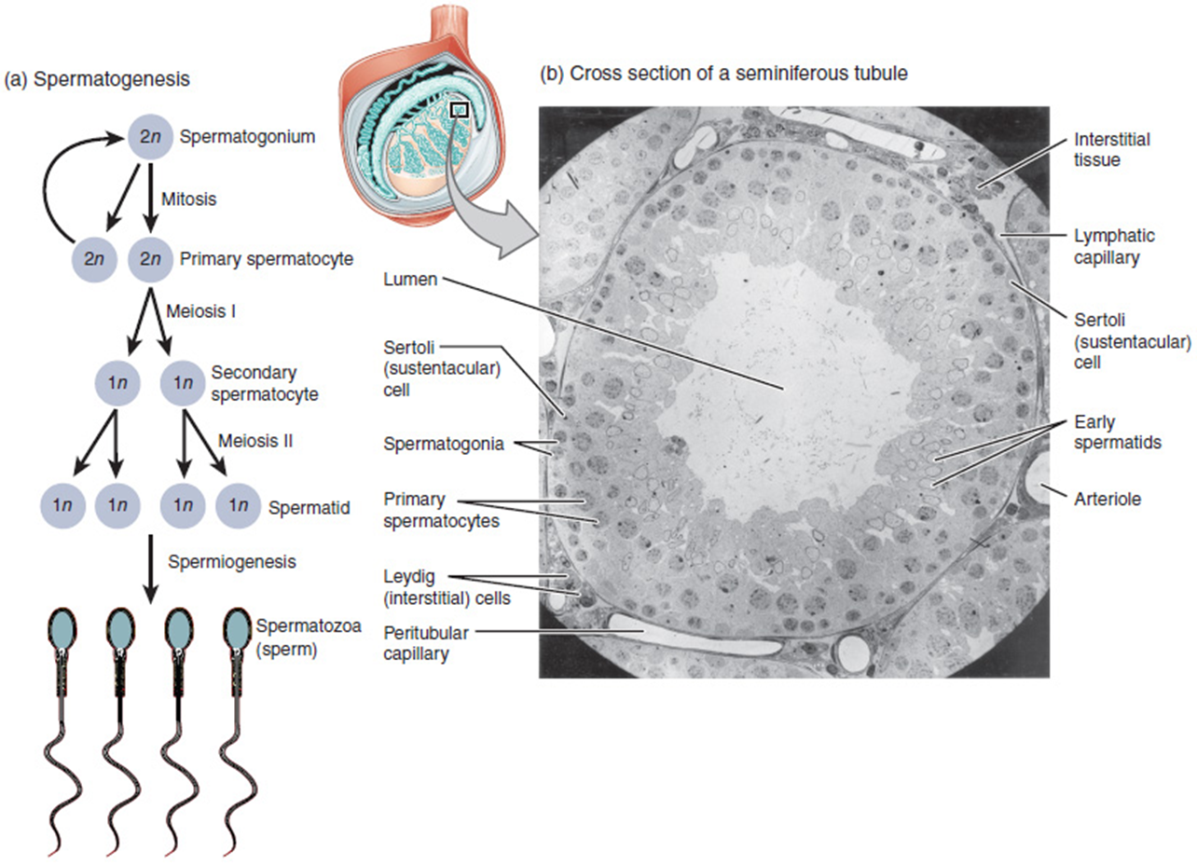
Figure 1 Spermatogenesis. (a) Process involved during spermatogenesis. (B) Cross section of a seminiferous tubule showing the cells involved in spermatogenesis. (Credit OpenStax Anatomy and Physiology CC BY 3.0)
- Spermatogenesis begins with spermatogonia and ends with spermatozoa or sperm. Examine Figure 1 and identify the two types of cell divisions involved. 1. ___________________________2. ______________. Which type will lead to identical cells and which one will lead to different cells?
- Besides mitosis and meiosis, which is the third process involved in spermatogenesis? What is the outcome of this process?
- Spermatogenesis begins with one cell and ends with _______________ spermatozoa which will end up in the ______________ of the seminiferous tubules. Draw an arrow on the figure above to indicate the direction spermatogenesis follows.
- Spermatogonia are diploid or (2n), having two copies of each chromosome. By the end of spermatogenesis each sperm will be _____________, or having ___________ copy of each chromosome.
- At the end of spermiogenesis what structures will each sperm eventually have? __________________________.
- Draw a sperm and label the following; Head, midpiece,tail, acrosome.
- From your notes, slide or text, what two other cell types are important in spermatogenesis? Give the function of each.
8. List the different cells involved in spermatogenesis beginning with spermatogonium and ending with spermatozoa.
Activity 2 – Hormonal Regulation of Male Reproductive System
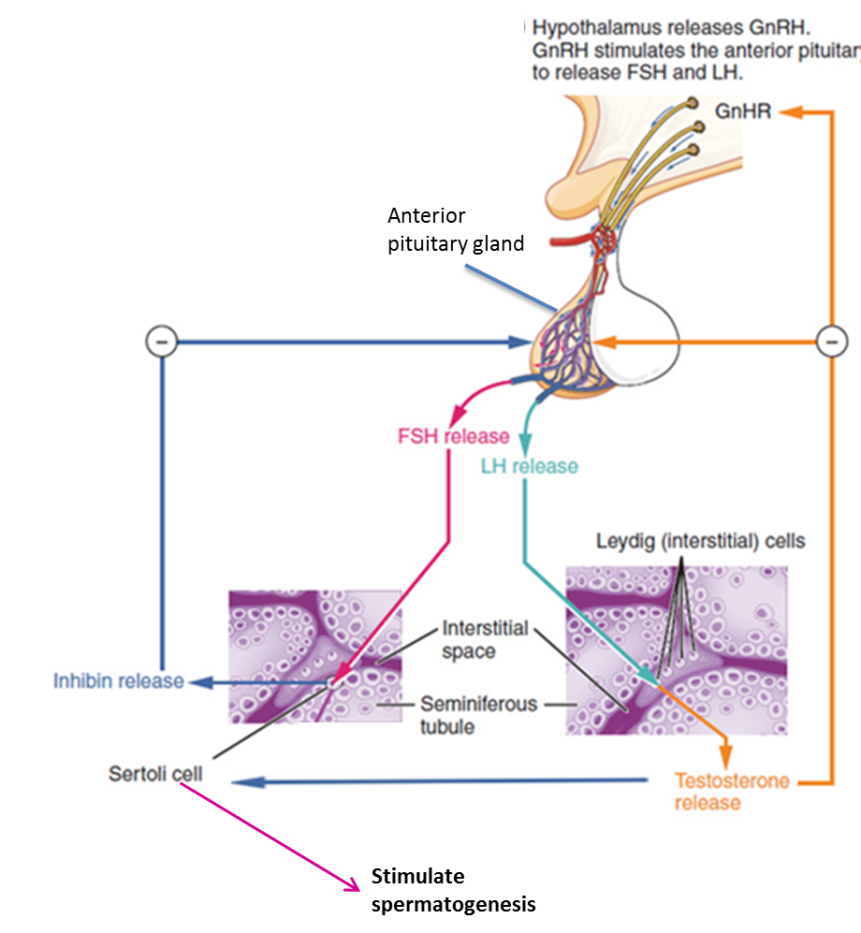
Figure 2 Hormonal regulation of testosterone and spermatogenesis (Credit OpenStax Anatomy and Physiology CC BY 3.0)
- Examine Figure 2 and list the hormones involved. Indicate the organ involved in each hormone production and release.
- Both FSH and LH get into the blood stream and will act on the testis. FSH will primarily affect the sertoli cells which will initiate the __________________ to undergo spermatogenesis. LH will primarily cause the production of _______________ by the ______________________ cells.
- The production and release of FSH and LH will be regulated by ________________ feedback stimulated by __________________ and _______________________.
Activity 3 – Oogenesis
Like the male reproductive system, the egg stem cell, oogonium, will divide via mitosis and give rise to primary oocytes, which will eventually undergo meiosis. At the end of meiosis II the mature egg or ovum is not fertilized and will be ready for implantation. Unlike males which will have four sperm after completion of spermatogenesis, females tend to have only one oocyte or ovum at the end of oogenesis.
- Examine Figure 3 and indicate the two cell divisions mentioned. Indicate how each one affects identify of daughter cells.
- Compared to males, how many secondary oocytes will be formed at the end of oogenesis? Why?
- How is a polar body different from a oocyte?
- Before birth, the oocyte will arrest in ____________________ phase, and will complete meiosis only when ____________ occur.
- Prior to puberty the oocyte will arrest in ____________ phase of ____________.
- Prior to ovulation the developing egg is called a(n) ________________. After completion of meiosis II it will be known as a _____________ which refers to a mature female gamete.
- After fertilization, which usually takes place in the ____________________, of the egg by one sperm, what would be expected to happen to the fertilized egg?
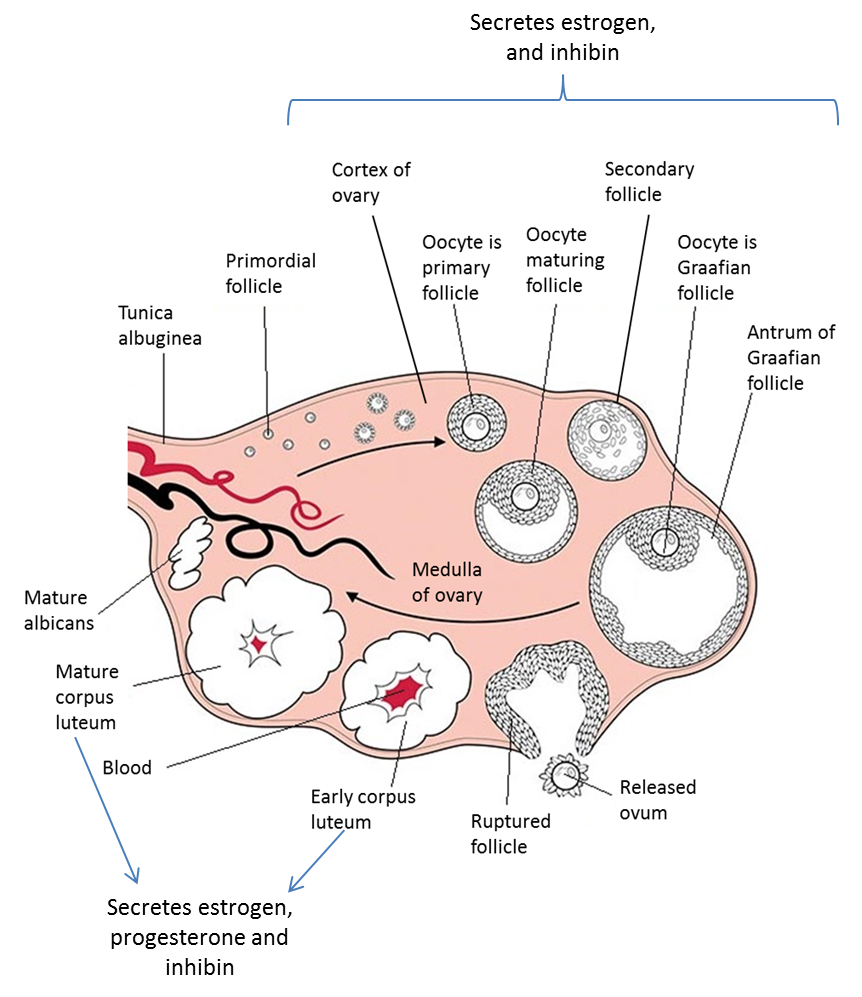
Figure 4. The ovary and development of follicles. (Credit OpenStax Anatomy and Physiology CC BY 3.0)
The figure above shows the ovary and development and maturity of an oocyte to an ovum. It takes about 28 days for one complete cycle (ovarian cycle). At birth all the primordial follicles are present. It is only the maturation process which will continue until menopause.
- List the steps involved in the maturation of the follicles beginning with the primordial follicles and ending with formation of the albicans. Indicate where ovulation occurs.
- The medulla of the ovary is shown, which region of the ovary is not depicted? ____________
- Based on your notes, which hormone is secreted by the developing follicles?_____________________ This hormone is important for the increase in LH just prior to ovulation. At which day would ovulation be expected?_________________________
- Which hormones are secreted by the corpus luteum? ___________________________
- Give two differences between a primary follicle and a mature or Graafian follicle.
- According to your notes, what happens to the ovum released at ovulation?
Activity 4 – Hormonal Regulation of female Reproductive System
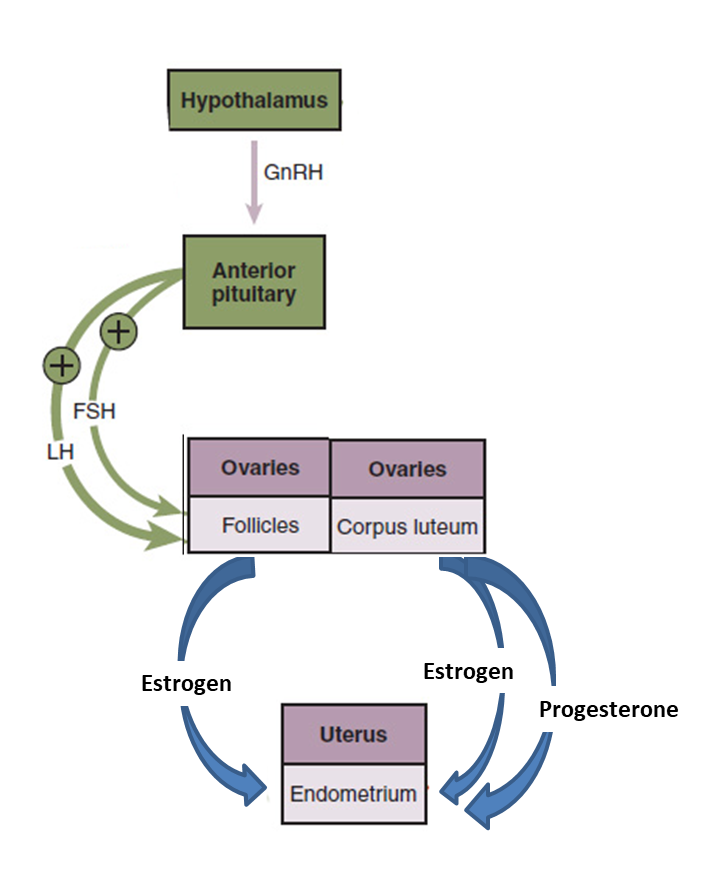
Figure 5 Hormonal regulation of the ovaries and endometrium. (Credit OpenStax Anatomy and Physiology CC BY 3.0)

Figure 6 Effect of hormones on ovarian cycle and, uterine cycle. (Credit OpenStax Anatomy and Physiology CC BY 3.0)
Figure 6 depicts hormonal secretions and regulation of the uterine cycle, ovarian cycle. Like males’ system, GnRH, LH and FSH are required for production and secretion of gonadal hormones, estrogen and progesterone for females. Estrogen will initially be produced by developing follicles and later, together with progesterone, by the corpus luteum. Each of these hormones have important role to play in the uterine cycle.
- List the hormones released by endocrine glands in the brain. Indicate the final target.
- List the hormones released by the ovary. Indicate the target of these hormones.
- The corpus luteum, which is the structure left behind after ovulation, will continue to secret estrogen and also _________________________.
- Both estrogen and progesterone will prepare the endometrium for possible pregnancy. Using figure B, which of these two hormones will be primarily responsible for .
a. The proliferative phase
b. Secretory phase
c. Maintenance of pregnancy.
- What happens at day 14? ____________________________________ Which pituitary hormone spikes or increases just prior to ovulation? __________________________
- If there is no increase in LH prior to ovulation, what do you think can be a possible outcome?
- It is important to note that an increase in one of the ovarian hormones must precede the spike in the pituitary hormone prior to ovulation. Which ovarian hormone will increase leading to the spike described? ______________________________
- List the three phases of the uterine cycle and indicate the key events taking place during each phase.

